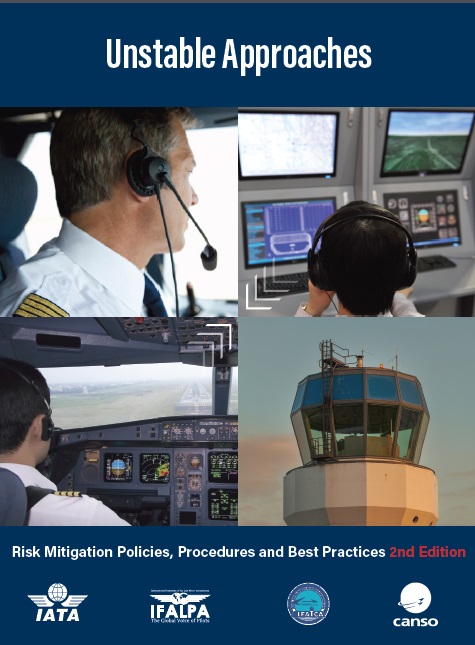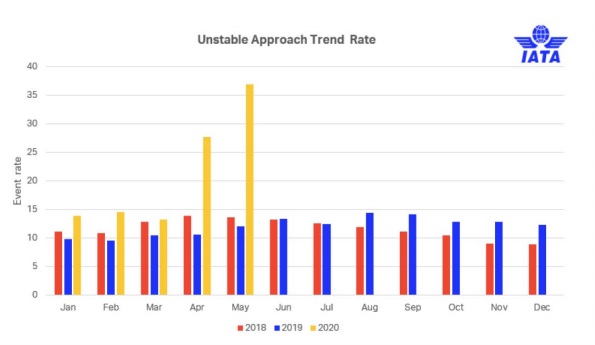IATA Unstable Approaches, Risk Mitigation Policies, Procedures and Best Practices
This 2nd Edition of this document (UPDATE: now in its 3rd edition), collaboratively written by the International Air Transport Association (IATA), the International Federation of Air Line Pilots’ Associations (IFALPA), the International Federation of Air Traffic Controllers’ Associations (IFATCA), the Civil Air Navigation Services Organisation (CANSO), has been issued.
The purpose of this document is to enhance the overall awareness of the contributing factors and outcomes of unstabilized approaches, together with some proven prevention strategies and to provide a reference based upon the guidance of major aircraft manufacturers and identified industry best practice, against which to review operational policy, procedures and training.
A stabilised approach is one during which several key flight parameters are controlled to within a specified range of values before the aircraft reaches a predefined point in space relative to the landing threshold, and maintained within that range of values until touchdown.
Between 2011 and 2015 period, 65% of the accidents occurred during the approach and landing phases. About 14% of these accidents occurred in the presence of an unstable approach (generally related to the aircraft’s energy state) without a go around performed.
Gilberto López Meyer, IARA Senior Vice President Safety and Flight Operations commented:
The industry as a whole must adopt an unequivocal position that the only acceptable approach is a stabilized one, and pilots in particular must take professional pride in achieving it on every occasion. Recognized industry practice is to recommend that a failure by the flight crew to conduct a stabilized approach should result in a go-around.
This new publication emphasizes the importance of pilots, air traffic controllers and airport staff working together along with regulators, training organizations and international trade associations to agree on measures and procedures to reduce unstable approaches.
It is recommended that all stakeholders should use this document as a reference against which to review operational policy, procedures and training.
UPDATE 9 January 2017: Unstable approach led to May 2014 hard landing of Air Canada Rouge A319 flight in Montego Bay, Jamaica
UPDATE 10 March 2017: Unstable Approach Dash 8 Touches Down 450ft Before Threshold
UPDATE 24 April 2017: Unstabilised Approach Accident at Aspen
UPDATE 13 July 2020: ATR72 Survives Water Impact During Unstabilised Approach
UPDATE 14 July 2020: IATA has warned that aggregated that FDM shows the rate of unstable approaches has been increasing during the period of reduced operations due to the 2020 COVID-19 pandemic
High Airspeed and Low Engine Thrust events were key to the increase.
IATA comment:
Any significant deviation from planned flight path should be announced and promptly corrected. In order to ensure the safety of the flight, a go-around is required if the approach cannot be continued within stabilized approach parameters. It is important to highlight that the decision to execute a go-around is not, in any way, an indication of poor flight crew performance but rather prudent decision-making. There should be a clear non-punitive go-around policy.




Recent Comments